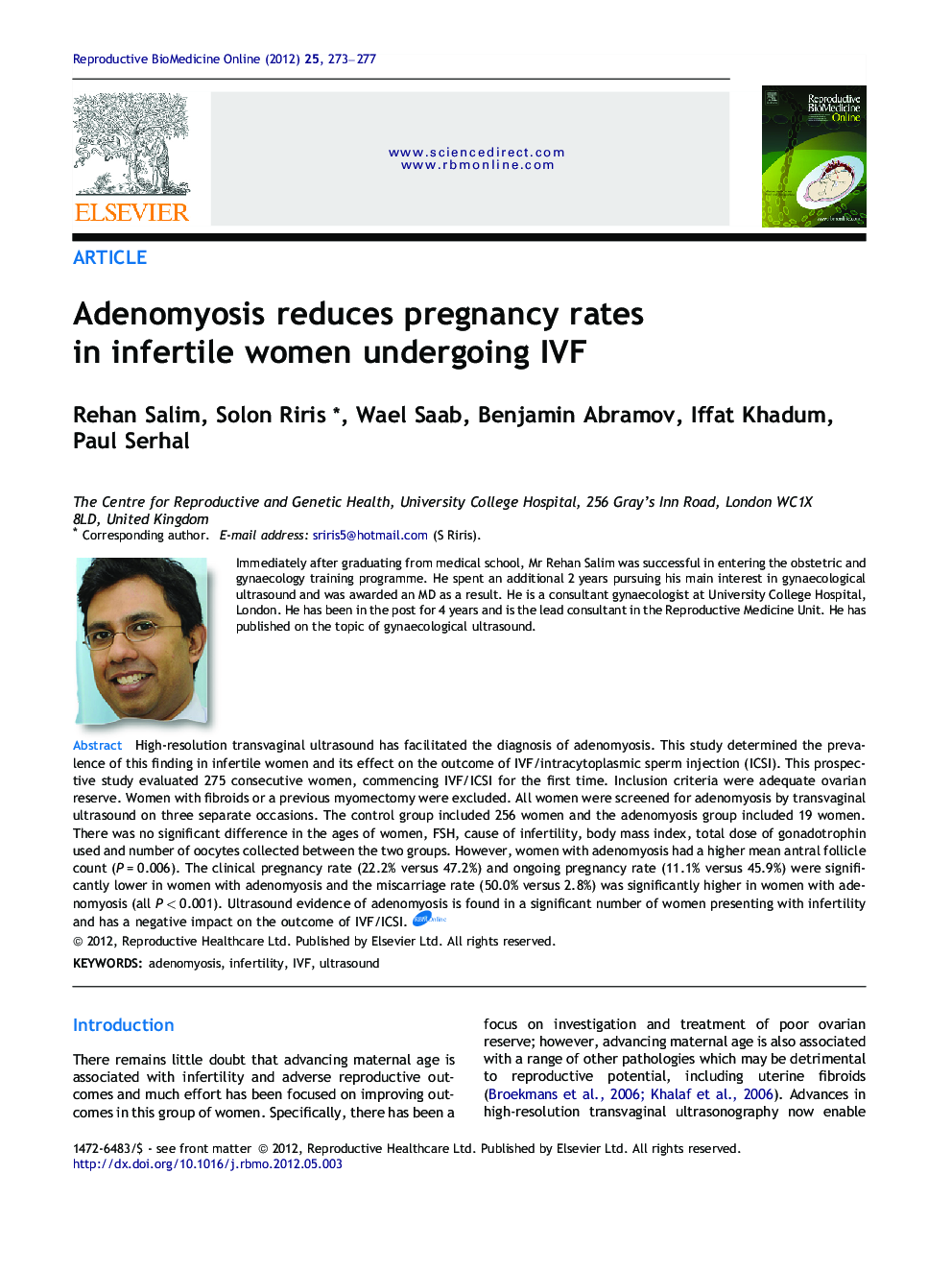| Article ID | Journal | Published Year | Pages | File Type |
|---|---|---|---|---|
| 3970641 | Reproductive BioMedicine Online | 2012 | 5 Pages |
High-resolution transvaginal ultrasound has facilitated the diagnosis of adenomyosis. This study determined the prevalence of this finding in infertile women and its effect on the outcome of IVF/intracytoplasmic sperm injection (ICSI). This prospective study evaluated 275 consecutive women, commencing IVF/ICSI for the first time. Inclusion criteria were adequate ovarian reserve. Women with fibroids or a previous myomectomy were excluded. All women were screened for adenomyosis by transvaginal ultrasound on three separate occasions. The control group included 256 women and the adenomyosis group included 19 women. There was no significant difference in the ages of women, FSH, cause of infertility, body mass index, total dose of gonadotrophin used and number of oocytes collected between the two groups. However, women with adenomyosis had a higher mean antral follicle count (P = 0.006). The clinical pregnancy rate (22.2% versus 47.2%) and ongoing pregnancy rate (11.1% versus 45.9%) were significantly lower in women with adenomyosis and the miscarriage rate (50.0% versus 2.8%) was significantly higher in women with adenomyosis (all P < 0.001). Ultrasound evidence of adenomyosis is found in a significant number of women presenting with infertility and has a negative impact on the outcome of IVF/ICSI.This paper suggests that a common condition known as adenomyosis is associated with a reduced success following fertility treatment such as IVF. The diagnosis of adenomyosis has been greatly facilitated by the advent of high-resolution transvaginal ultrasound. This was a study including 275 consecutive women who were commencing IVF for the first time. Comparing women who did not have adenomyosis and those that did, the clinical and ongoing pregnancy rates were both lower in women with adenomyosis (22.2% versus 47.2% and 11.1% versus 45.9%, respectively). So, fewer women with adenomyosis became pregnant and had an ongoing pregnancy. The miscarriage rate was higher in women with adenomyosis compared with those without (50.0% versus 2.8%). We conclude that ultrasound evidence of adenomyosis is found in a significant number of women presenting with infertility and has a negative impact on the outcome of IVF.
